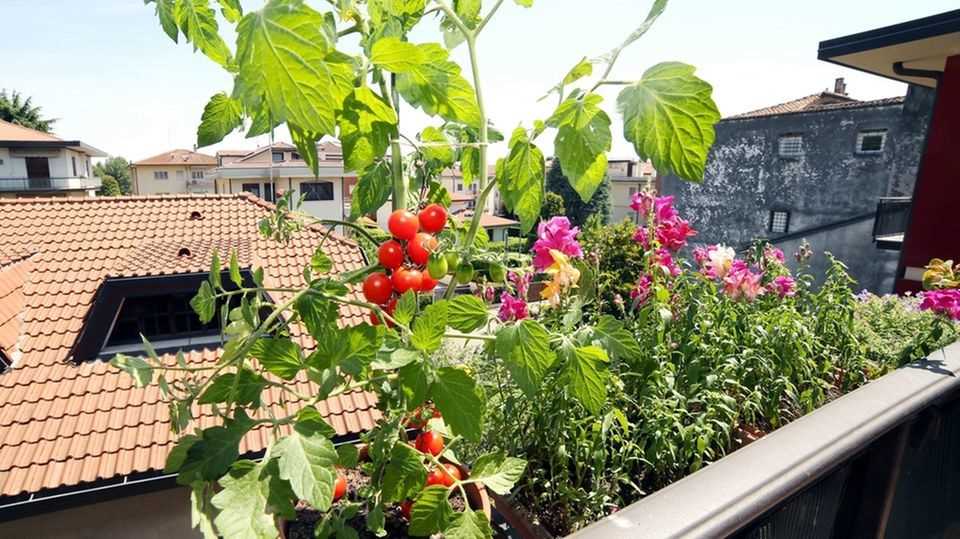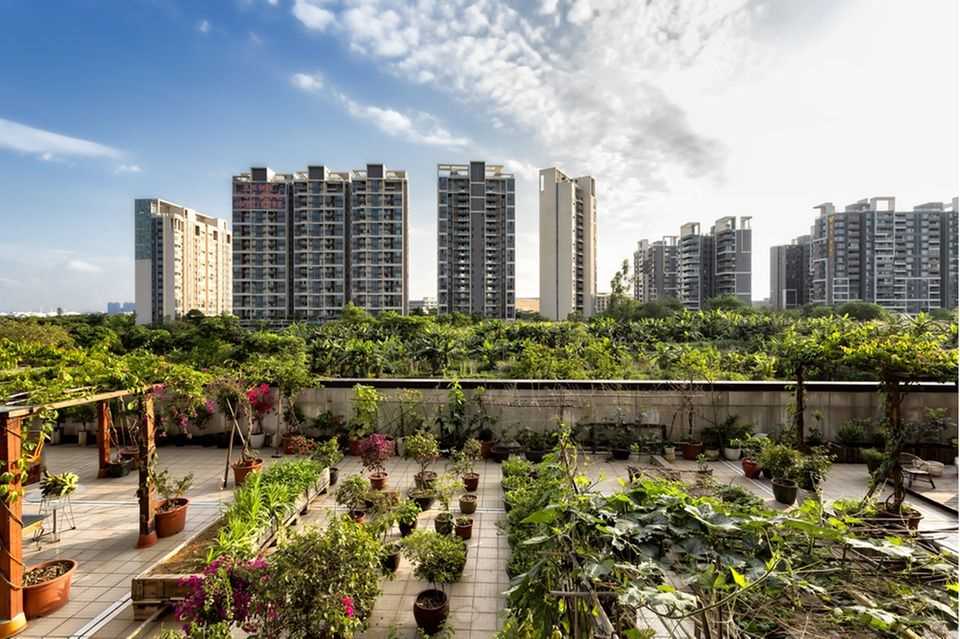Urban gardening
That’s why we love gardening in the city
© AYA images / Shutterstock
What does the term urban gardening fall under and how can it be implemented? Why is it useful? Answers and ideas can be found here.
What is urban gardening?
Urban gardening, this is how the English term urban gardening can be translated. In cities, space is a scarce resource and the opportunities to experience nature or to garden are correspondingly rare. In recent years, urban gardening has nevertheless (or perhaps because of it) more and more followers, be it for self-sufficiency, for sustainability reasons or because of the community.
There is no such thing a Urban gardening, rather, different concepts have developed. Are known above all Community gardensin which groups take care of the care of the beds. Often these are also publicly accessible to others, a lively exchange and digging together are of course part of it. Also intercultural gardens are included and are intended to bring people of different origins together to grow fruit and vegetables together. Such joint projects are popular not least because of their DIY character, which can also be experimented with.
In urban gardening, the urban gardeners benefit from the communal exchange, in which knowledge is imparted, a lot is tried out and each other is helped. Children can also benefit from gardening. It gives them (and adults!) The opportunity to see where food comes from, how much work and time has gone into growing and growing, and learn to appreciate it. All good reasons to get involved in urban gardening!
That shouldn’t go unmentioned Guerrilla gardeningthat relies on a different method than the other concepts: here fallow areas in cities are (secretly) planted, e.g. B. with seed bombs, which happens out of political protest and not always completely legally.
That motivates gardeners: inside
There are many reasons for urban gardening. Sustainability, food supply, but also community and having fun in the matter often attracts people to urban gardening, such as:
How does urban gardening work?
The gardens can be created in unused space in the city, on the roof, in the backyard or with numerous other possibilities (of course, always check whether a permit is required …). How gardening takes place also depends on the spatial conditions and the desired plants. In order for fruit and vegetables to grow, light, air and sufficient water are required; the location should meet these requirements. Depending on the plants, the following ideas are suitable for growing:
- Raised beds
- Arable land
- Boxes
- bucket
- Spirals
- Vertical garden

Urban gardening on a roof
© Jose L Vilchez / Shutterstock
The advantage of boxes and buckets is that they are mobile and can move accordingly if the location should be changed. Vertical gardens are ideal when there is little space and raised beds score with back-friendly work, hardly any snail infestation and high yield. Some committed gardeners also rely on upcycling and use, for example, old fruit crates, beverage cartons, pipes or bathtubs for planting.
Growing fruit and vegetables on your own balcony or garden can also be referred to as urban gardening. This often works in a small space, e.g. B. with a vertical bed on the balcony, or a manageable bed or raised bed in the small garden.
Reading tip: This is how you can fill a raised bed, everything you should know about a raised bed on the balcony can be found here.
Which plants are suitable?
Which varieties are suitable for cultivation depends on the location and the desired (or available) planters – and of course the taste of the gardener! Herbs, for example, thrive in spirals, radishes can also be grown in window boxes, while beetroot, kohlrabi or salads can also be used in raised beds.
Anyone interested in a long-term and sustainable concept should take a closer look at the topic of permaculture in the garden. The closed cycle system is based on biodiversity and also includes ethical principles in its concept.
Examples of urban gardening
The most famous community gardens in Germany include the “Prinzessinnengarten” in Berlin, which is now represented in two locations, and the “o’pflanzt is” in Munich. But community gardening is also popular in other places; you can find out whether there is a community garden in your area, for example on the website of the Network for community gardeners find out. Alternatively, information about such offers can often be found on city or municipality websites.
Would you like to explore gardening with others? You can find like-minded people in the BRIGITTE community.

